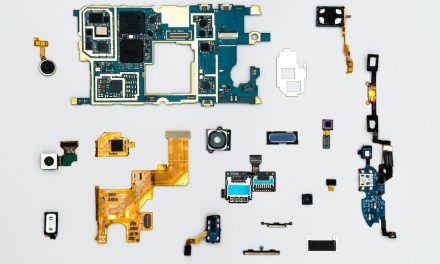Table of Contents
“Blending the best of AI and human touch for transformative learning experiences.”
Introduction
Introduction:
In today’s rapidly evolving digital landscape, the integration of artificial intelligence (AI) into learning and development (L&D) initiatives has become increasingly prevalent. However, the key to successful implementation lies in striking a balance between AI-driven solutions and human-centric learning approaches. In this article, we will explore the lessons that L&D innovators can learn from bridging the gap between AI and human-centric learning to create more effective and engaging training programs.
Artificial Intelligence in Learning and Development
In the ever-evolving landscape of learning and development (L&D), the integration of artificial intelligence (AI) has become a game-changer. AI has the potential to revolutionize the way we approach training and development, offering new opportunities for personalized learning experiences and improved outcomes. However, as L&D professionals navigate this new terrain, it is essential to strike a balance between leveraging AI technology and maintaining a human-centric approach to learning.
One of the key lessons for L&D innovators is the importance of understanding the capabilities and limitations of AI in the context of learning. AI can analyze vast amounts of data to identify patterns and trends, enabling personalized learning experiences tailored to individual needs and preferences. This can lead to more effective training programs and better retention of information. However, AI is not a substitute for human interaction and empathy. While AI can provide valuable insights and recommendations, it is essential to remember that learners are individuals with unique motivations, emotions, and learning styles.
Another lesson for L&D innovators is the need to prioritize ethical considerations when implementing AI in learning programs. As AI becomes more integrated into L&D, there are concerns about data privacy, bias, and transparency. L&D professionals must ensure that AI algorithms are fair and unbiased, and that learners have control over their data. Transparency about how AI is being used in training programs is essential to build trust with learners and maintain ethical standards.
Furthermore, L&D innovators must recognize the importance of continuous learning and adaptation in the age of AI. As technology evolves, so too must L&D practices. This requires a willingness to experiment with new approaches, learn from failures, and adapt strategies based on feedback and data. By embracing a growth mindset and a culture of continuous improvement, L&D professionals can stay ahead of the curve and deliver impactful learning experiences that meet the needs of today’s learners.
One of the most significant challenges for L&D innovators is finding the right balance between AI-driven automation and human touch in learning programs. While AI can automate routine tasks and provide personalized recommendations, human interaction is essential for building relationships, fostering collaboration, and supporting emotional well-being. L&D professionals must find ways to integrate AI seamlessly into learning programs while preserving the human element that makes learning meaningful and engaging.
In conclusion, the integration of AI in learning and development offers exciting possibilities for L&D professionals to enhance training programs and improve outcomes. However, it is essential to approach AI with a human-centric mindset, prioritizing ethical considerations, continuous learning, and the balance between automation and human touch. By embracing these lessons, L&D innovators can harness the power of AI to create impactful learning experiences that empower learners to reach their full potential.
Human-Centric Approaches to Learning

In the ever-evolving landscape of learning and development (L&D), the integration of artificial intelligence (AI) has become increasingly prevalent. While AI offers numerous benefits in terms of efficiency and personalization, it is essential for L&D innovators to strike a balance between technology-driven solutions and human-centric approaches to learning.
One of the key lessons for L&D innovators is the importance of leveraging AI to enhance rather than replace human interaction in the learning process. While AI can automate certain aspects of training and development, such as content delivery and assessment, it is crucial to recognize the value of human connection in fostering engagement and motivation among learners. By combining AI-driven tools with human touchpoints, L&D professionals can create a more holistic and effective learning experience.
Another lesson for L&D innovators is the need to prioritize empathy and emotional intelligence in the design and delivery of learning programs. While AI can provide valuable insights into learner behavior and preferences, it is essential for L&D professionals to understand the emotional and psychological aspects of learning. By incorporating empathy into the design of training materials and interactions, L&D innovators can create a more supportive and inclusive learning environment.
Furthermore, L&D innovators must recognize the importance of continuous feedback and iteration in the development of AI-driven learning solutions. By collecting and analyzing data on learner performance and engagement, L&D professionals can identify areas for improvement and refine their approach over time. This iterative process allows for ongoing optimization and ensures that AI-driven learning solutions remain relevant and effective.
In addition, L&D innovators should prioritize accessibility and inclusivity in the design of AI-driven learning solutions. By considering the diverse needs and preferences of learners, L&D professionals can create more inclusive and equitable learning experiences. This may involve providing multiple modes of content delivery, incorporating assistive technologies, or offering personalized learning pathways based on individual needs.
Moreover, L&D innovators must be mindful of the ethical implications of AI in learning and development. As AI technologies become more sophisticated, there is a growing concern about issues such as data privacy, bias, and transparency. L&D professionals must take proactive steps to address these ethical considerations and ensure that AI-driven learning solutions are developed and implemented responsibly.
Overall, the integration of AI in L&D presents both opportunities and challenges for innovators in the field. By embracing a human-centric approach to learning and prioritizing empathy, feedback, inclusivity, and ethics, L&D professionals can harness the power of AI to create more engaging, personalized, and effective learning experiences. By bridging the gap between AI and human-centric learning, L&D innovators can drive positive outcomes for both learners and organizations alike.
Integrating AI with Human-Centered Learning
In today’s rapidly evolving digital landscape, the integration of artificial intelligence (AI) with human-centered learning has become a key focus for learning and development (L&D) innovators. As organizations strive to stay ahead of the curve and adapt to the changing needs of their workforce, finding ways to leverage AI to enhance the learning experience while maintaining a human touch has become essential.
One of the key lessons for L&D innovators looking to bridge AI and human-centric learning is the importance of understanding the unique strengths and limitations of both AI and human instructors. While AI can provide personalized learning experiences, analyze vast amounts of data, and deliver content at scale, human instructors bring empathy, creativity, and the ability to connect with learners on a deeper level.
By combining the strengths of AI and human instructors, organizations can create a more holistic and effective learning experience. For example, AI can be used to analyze learner data and provide personalized recommendations for content and resources, while human instructors can provide mentorship, guidance, and support to help learners apply their knowledge in real-world situations.
Another important lesson for L&D innovators is the need to design AI-powered learning experiences that are user-friendly, engaging, and accessible. While AI has the potential to revolutionize the way we learn, it is important to remember that technology is only as effective as the user experience it provides. By focusing on creating intuitive interfaces, interactive content, and seamless integration with existing learning platforms, organizations can ensure that AI enhances the learning experience rather than detracts from it.
Furthermore, L&D innovators must also consider the ethical implications of integrating AI into the learning process. As AI becomes more prevalent in education and training, questions around data privacy, bias, and transparency have become increasingly important. Organizations must be transparent about how AI is being used in the learning process, ensure that data is being handled responsibly, and actively work to mitigate bias and discrimination in AI algorithms.
Ultimately, the key to successfully bridging AI and human-centric learning lies in finding the right balance between technology and human interaction. While AI can provide valuable insights and support, it is the human touch that truly makes the learning experience meaningful and impactful. By leveraging the strengths of both AI and human instructors, organizations can create a learning environment that is personalized, engaging, and effective.
In conclusion, integrating AI with human-centered learning is a complex and challenging task, but one that holds great promise for the future of L&D. By understanding the unique strengths and limitations of AI and human instructors, designing user-friendly and engaging AI-powered learning experiences, and addressing ethical considerations, organizations can create a more effective and impactful learning experience for their workforce. As L&D innovators continue to explore the possibilities of AI in education and training, it is essential to keep the human element at the forefront and ensure that technology is used to enhance, rather than replace, the valuable contributions of human instructors.
Challenges and Opportunities in AI-Driven Learning
In the ever-evolving landscape of learning and development (L&D), the integration of artificial intelligence (AI) has become a game-changer. AI-driven learning solutions have the potential to revolutionize the way organizations train their employees, making learning more personalized, efficient, and effective. However, as with any new technology, there are challenges and opportunities that L&D innovators must navigate to successfully bridge AI and human-centric learning.
One of the key challenges in implementing AI-driven learning solutions is ensuring that they complement, rather than replace, human instructors. While AI can analyze vast amounts of data and provide personalized recommendations for learners, it lacks the empathy, creativity, and critical thinking skills that human instructors bring to the table. To bridge AI and human-centric learning, L&D innovators must strike a balance between leveraging AI’s capabilities and preserving the human touch in the learning process.
Another challenge is ensuring that AI-driven learning solutions are inclusive and accessible to all learners. AI algorithms are only as good as the data they are trained on, and if that data is biased or incomplete, it can lead to discriminatory outcomes. L&D innovators must be vigilant in monitoring and addressing bias in AI algorithms to ensure that all learners have equal opportunities to benefit from AI-driven learning solutions.
Despite these challenges, there are also significant opportunities for L&D innovators in leveraging AI to enhance human-centric learning. AI can help identify gaps in learners’ knowledge and skills, recommend personalized learning paths, and provide real-time feedback to support continuous learning and improvement. By harnessing the power of AI, L&D innovators can create more engaging, interactive, and effective learning experiences for employees.
One of the key opportunities in AI-driven learning is the ability to scale personalized learning at a fraction of the cost of traditional instructor-led training. AI can analyze learners’ preferences, behaviors, and performance data to tailor learning content and delivery methods to their individual needs. This not only improves learning outcomes but also increases employee engagement and retention, ultimately driving business results.
To successfully bridge AI and human-centric learning, L&D innovators must adopt a learner-centered approach that puts the needs and preferences of learners at the forefront. This means designing AI-driven learning solutions that are intuitive, user-friendly, and adaptable to different learning styles and preferences. L&D innovators must also invest in training and upskilling human instructors to effectively integrate AI into their teaching practices and provide the human touch that AI lacks.
In conclusion, the integration of AI into L&D presents both challenges and opportunities for innovators in the field. By striking a balance between leveraging AI’s capabilities and preserving the human touch in the learning process, L&D innovators can create more personalized, efficient, and effective learning experiences for employees. By addressing bias in AI algorithms and ensuring inclusivity and accessibility for all learners, L&D innovators can harness the power of AI to drive business results and empower employees to reach their full potential.
Best Practices for Implementing AI in L&D
In the ever-evolving landscape of learning and development (L&D), the integration of artificial intelligence (AI) has become a game-changer for organizations looking to enhance their training programs. AI has the potential to revolutionize the way employees learn and grow within an organization, providing personalized and adaptive learning experiences that cater to individual needs and preferences. However, while AI offers a wealth of opportunities for L&D professionals, it also presents its own set of challenges and considerations that must be carefully navigated.
One of the key lessons for L&D innovators looking to bridge AI and human-centric learning is the importance of striking a balance between technology-driven solutions and human touchpoints. While AI can automate and streamline many aspects of the learning process, it is essential to remember that learning is ultimately a human experience. By incorporating elements of human interaction and feedback into AI-driven learning programs, organizations can create a more engaging and effective learning environment that resonates with employees on a personal level.
Another crucial consideration for L&D professionals is the need to ensure that AI-driven learning programs are inclusive and accessible to all employees. While AI has the potential to deliver highly personalized learning experiences, it is essential to guard against bias and ensure that all employees have equal access to learning opportunities. By actively monitoring and addressing potential biases in AI algorithms, organizations can create a more equitable and inclusive learning environment that empowers all employees to succeed.
Furthermore, L&D innovators must be mindful of the ethical implications of integrating AI into learning programs. As AI becomes increasingly sophisticated and autonomous, it is essential to establish clear guidelines and protocols for the ethical use of AI in L&D. This includes ensuring transparency and accountability in AI algorithms, as well as safeguarding employee data and privacy rights. By upholding ethical standards in the implementation of AI-driven learning programs, organizations can build trust with employees and stakeholders and foster a culture of integrity and responsibility.
In addition to these considerations, L&D professionals must also be prepared to adapt and evolve their strategies in response to the rapidly changing landscape of AI technology. As AI continues to advance and develop, organizations must stay abreast of the latest trends and innovations in AI-driven learning to remain competitive and relevant. By fostering a culture of continuous learning and innovation, L&D professionals can harness the full potential of AI to drive organizational growth and success.
In conclusion, the integration of AI into L&D presents a wealth of opportunities for organizations to enhance their training programs and empower employees to reach their full potential. By striking a balance between technology-driven solutions and human touchpoints, ensuring inclusivity and accessibility, upholding ethical standards, and staying abreast of the latest trends in AI technology, L&D professionals can successfully bridge AI and human-centric learning to create a more engaging, effective, and impactful learning environment. By embracing these lessons and best practices, organizations can unlock the full potential of AI in L&D and drive innovation and growth in the digital age.
Future Trends in AI and Human-Centric Learning
In the ever-evolving landscape of learning and development (L&D), the integration of artificial intelligence (AI) has become increasingly prevalent. AI has the potential to revolutionize the way we approach learning, offering personalized and adaptive solutions that cater to individual needs and preferences. However, as we embrace the possibilities that AI presents, it is crucial not to lose sight of the importance of human-centric learning. Balancing the benefits of AI with the human touch is essential for creating effective and engaging learning experiences.
One of the key lessons for L&D innovators is the need to strike a balance between AI-driven solutions and human-centered design. While AI can provide valuable insights and recommendations based on data analysis, it is essential to remember that learners are not machines. They have unique emotions, motivations, and learning styles that cannot be fully captured by algorithms. By incorporating elements of human-centered design, such as empathy, creativity, and collaboration, L&D professionals can create more meaningful and impactful learning experiences.
Another important lesson for L&D innovators is the need to prioritize ethical considerations when implementing AI in learning solutions. As AI becomes more integrated into L&D practices, there is a growing concern about issues such as data privacy, bias, and transparency. It is essential for L&D professionals to be mindful of these ethical considerations and to ensure that AI is used responsibly and ethically. By taking a proactive approach to ethical considerations, L&D innovators can build trust with learners and stakeholders and create a more inclusive and equitable learning environment.
Furthermore, L&D innovators must recognize the limitations of AI and the importance of human expertise in the learning process. While AI can analyze vast amounts of data and provide valuable insights, it cannot replace the expertise and experience of human instructors and facilitators. Human interaction, feedback, and support are essential components of effective learning experiences. By leveraging AI to enhance, rather than replace, human expertise, L&D professionals can create more engaging and impactful learning solutions.
In addition to balancing AI-driven solutions with human-centered design and prioritizing ethical considerations, L&D innovators must also embrace a culture of continuous learning and innovation. The field of L&D is constantly evolving, with new technologies, trends, and best practices emerging all the time. By staying curious, open-minded, and adaptable, L&D professionals can stay ahead of the curve and deliver cutting-edge learning experiences that meet the needs of learners in the digital age.
In conclusion, the integration of AI in L&D presents exciting opportunities for innovation and transformation. By embracing the lessons of balancing AI with human-centered design, prioritizing ethical considerations, leveraging human expertise, and fostering a culture of continuous learning and innovation, L&D professionals can create more effective and engaging learning experiences. As we navigate the future of AI and human-centric learning, it is essential to keep the learner at the center of our efforts and to strive for excellence in all aspects of L&D practice.
Q&A
1. What is the main focus of the book “Lessons for L&D Innovators: Bridging AI and Human-Centric Learning”?
The main focus is on integrating artificial intelligence (AI) with human-centric learning in the field of Learning and Development (L&D).
2. Why is it important to bridge AI and human-centric learning in L&D?
It is important to leverage the benefits of AI technology while still prioritizing the human element in learning and development processes.
3. What are some key lessons for L&D innovators discussed in the book?
Some key lessons include understanding the potential of AI in L&D, balancing technology with human touch, and designing personalized learning experiences.
4. How can AI enhance learning experiences in L&D?
AI can enhance learning experiences by providing personalized recommendations, automating administrative tasks, and analyzing data to improve learning outcomes.
5. What are some challenges in bridging AI and human-centric learning in L&D?
Challenges include ensuring data privacy and security, addressing ethical concerns, and maintaining a balance between technology and human interaction.
6. How can L&D professionals effectively integrate AI into their learning strategies?
L&D professionals can effectively integrate AI by understanding the capabilities of AI technology, aligning it with learning objectives, and continuously evaluating and adapting their strategies.
Conclusion
In conclusion, bridging AI and human-centric learning is essential for L&D innovators to create effective and engaging learning experiences. By leveraging the strengths of both AI technology and human interaction, organizations can enhance the learning process and better meet the needs of their learners. It is important for L&D professionals to embrace AI as a tool to support and enhance human-centric learning, rather than replace it entirely. By finding the right balance between AI and human elements, L&D innovators can create more personalized, adaptive, and impactful learning experiences for their employees.




